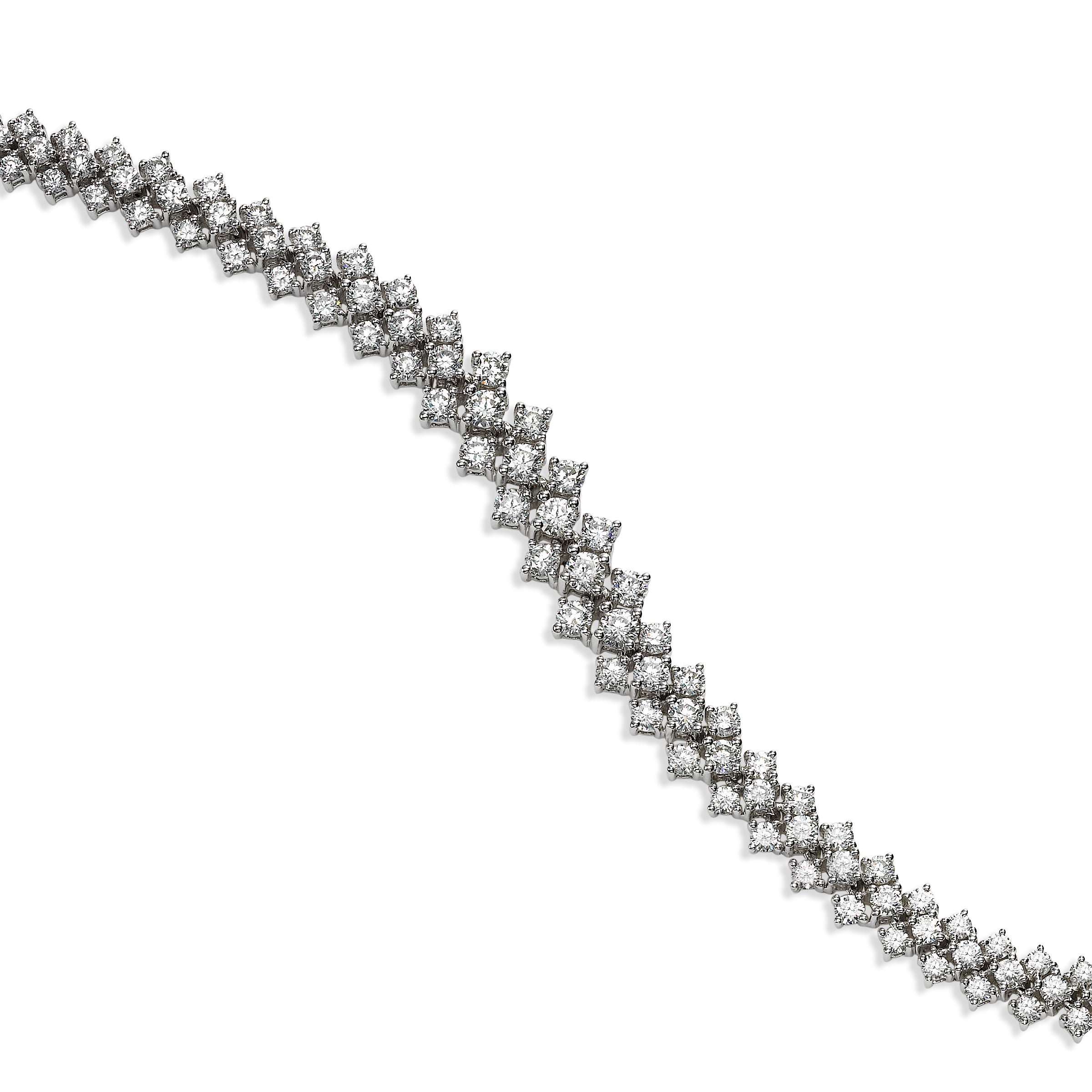 This month is all about diamonds. There are so many reasons to admire this gem, still the hardest naturally occurring substance on earth. Sparkling, beautiful and a symbol over the centuries for everlasting love, diamonds are also linked with purity and faith.
This month is all about diamonds. There are so many reasons to admire this gem, still the hardest naturally occurring substance on earth. Sparkling, beautiful and a symbol over the centuries for everlasting love, diamonds are also linked with purity and faith.
What gives a diamond its sparkle, its brilliance? When properly crafted by a master cutter, the flat polished surfaces of the gem (called facets) play with light in an almost magical way. Those facets act as mirrors and prisms. The mirror effect causes light to enter the gem, bounce around, and then back out to the eye, giving flashes of white light, called “scintillation.” As the light passes through the diamond, the facets also act as prisms, creating a “fire” of tiny rainbows with all their colors.
The ancient Greeks believed diamonds were “splinters of stars” that fell to the earth. They may have not been too far off: microdiamonds have been found in lunar rocks containing super-tiny diamonds. “Earthly” diamonds, formed deep within the earth, were brought to the surface by volcanic activity. The rarest are over 3 billion years old. Others may be as “young” as 65 million years old. Today, diamonds can also be created in laboratories. This process is extremely energy-intensive, and lab-created diamonds are not rare, but fulfill a particular niche.
A natural diamond is one of the most beautiful—and highly prized— gems in the world. Strong and dazzling, a diamond is perfect for everyday jewelry—as well as the premier symbol of love. Those same qualities make it the gem of choice for an heirloom or keepsake jewel.



Check out these diamonds: favorites, rings, necklaces, bracelets, earrings.
While our store is closed for now, we are still available by phone. Please call us at 1-800-636-7886 for a consultation.

